 1999 Hyundai Accent II Dimensions, Size & Specs
1999 Hyundai Accent II Dimensions, Size & SpecsMeasurements of the 1999 Hyundai Accent II, engineered for optimal performance and comfort
| Dimensions | |
|---|---|
| Length: | 4200-4260 mm165.4-167.7 in13.8-14.0 ft |
| Width: | 1670-1680 mm65.7-66.1 in5.5-5.5 ft |
| Height: | 1395-1405 mm54.9-55.3 in4.6-4.6 ft |
| Trunk Capacity: | 375 liter13.2 cu ft |
| Weight Specifications | |
| Curb Weight: | 995-1080 kg2194-2381 lbs |
| Maximal permitted Weight: | 1480-1570 kg3263-3461 lbs |
| Tire Specifications | |
| Rims Sizes: |
|
| Tire Sizes: |
|
The Hyundai Accent II, produced from 1999 to 2006, is a compact sedan that offers a balanced blend of practicality and efficient design. It was available predominantly as a four-door sedan aimed at budget-conscious drivers seeking reliability and reasonable interior space. The vehicle's length ranges between 4200 mm and 4260 mm (approximately 165 to 168 inches), making it comfortably sized for city driving and easy parking. Its width spans from 1670 mm to 1680 mm (about 65.7 to 66.1 inches), providing adequate cabin space without being overly bulky. The height varies slightly from 1395 mm to 1405 mm (around 54.9 to 55.3 inches), contributing to the car's aerodynamic stance. Weighing between 995 kg and 1080 kg (2193 to 2381 pounds) when empty, the Accent II is light enough to maintain good fuel efficiency, yet sturdy enough for daily driving. The maximum permissible weight ranges from 1480 kg to 1570 kg (3263 to 3463 pounds), supporting a full passenger and cargo load effectively. Notably, the Hyundai Accent II features a luggage capacity of 375 liters (13.25 cubic feet), offering substantial storage for a subcompact sedan—ideal for groceries or small luggage. The car came equipped with 13-inch or 14-inch rims, paired with tire sizes including 175/70 R13 S, 175/70 R13, 185/60 R14, and 185/60 R14 H, balancing ride comfort and handling. Overall, the Hyundai Accent II (1999-2006) stands out as a practical, compact sedan with easy maneuverability and a commendable cargo capacity for its segment.
Discover the standout features that make the 1999 Hyundai Accent II a leader in its class
Have a question? Please check our knowledgebase first.
The Hyundai Accent II sedan, produced from 1999 to 2006, has a length that ranges from 4200 mm to 4260 mm (approximately 165.4 to 167.7 inches). This slight variation in length depends on the specific trim or market specifications. Such dimensions place the Accent II solidly in the subcompact sedan category, providing a balance of inside cabin space and exterior maneuverability suitable for both city driving and highway use.
The width of the Hyundai Accent II varies between 1670 mm and 1680 mm (65.7 to 66.1 inches). This modest width helps the car maintain good agility, making it easier to navigate narrow city streets and park in tight spots. The Accent II's width supports enough interior space for passengers and cargo without compromising its compact nature, allowing a comfortable ride for a subcompact sedan.
The Hyundai Accent II stands between 1395 mm and 1405 mm tall (about 54.9 to 55.3 inches). This height offers enough headroom for occupants typical of subcompact sedans, contributing to passenger comfort during rides. Aerodynamically, the height helps reduce wind resistance while keeping the vehicle stable and efficient, aiding in fuel economy and handling.
The curb weight of the Accent II ranges from 995 kg to 1080 kg (approximately 2194 to 2381 lbs). This relatively light weight helps with nimble handling and fuel efficiency. The vehicle’s maximum weight capacity, which includes passengers and cargo, is between 1480 kg and 1570 kg (3263 to 3462 lbs). This weight capacity ensures that the Accent II can safely carry four or five occupants plus luggage without compromising performance or structural integrity.
The Hyundai Accent II provides a luggage capacity of 375 liters (around 13.2 cubic feet). This space is ample for everyday uses such as groceries, suitcases for weekend trips, and other cargo needs typical for a subcompact sedan. The trunk is designed to balance between passenger space and storage, offering a practical solution for small families or individuals requiring modest cargo capacity.
Yes, the Hyundai Accent II fits comfortably into a standard garage. With a length of about 4200-4260 mm (165.4-167.7 inches) and width of 1670-1680 mm (65.7-66.1 inches), it is compact enough to be parked with ease in typical single-car garages around the world, which commonly have dimensions near 2.4 to 3 meters (7.9 to 9.8 feet) wide and 4.8 to 6 meters (15.7 to 19.7 feet) deep. Drivers will find parking and maneuvering within confined garage spaces straightforward.
Compared to the Hyundai Accent I, the Accent II features several size and design upgrades. The Accent II generally is slightly longer and wider, enhancing interior space and comfort. The newer generation also improved aerodynamics and structural rigidity, resulting in better handling and safety features. The modernized exterior design includes sleeker lines and refined details that distinguish it visually from the more basic and compact first generation Accent, representing Hyundai’s stride toward more competitive subcompact cars during the early 2000s.
When compared to similar subcompact sedans from the same period, such as the Honda Civic (6th generation), Toyota Corolla (E110), or Ford Fiesta sedan variants, the Hyundai Accent II is slightly smaller in overall dimensions but remains competitive. While its length ranges from 4200-4260 mm, many competitors hovered around 4300-4400 mm, making the Accent slightly more compact. Its width and height are within the typical subcompact range, helping it stay agile in urban environments. In terms of luggage capacity, the Accent II’s 375 liters is adequate though some competitors may offer more trunk space, reflecting Hyundai’s focus on economical packaging and value.
The Hyundai Accent II came equipped with rim sizes of 13 and 14 inches, with tire sizes including 175/70 R13 S, 175/70 R13, 185/60 R14, and 185/60 R14 H. These relatively small rim and tire sizes typically contribute to a comfortable ride by absorbing road irregularities well and providing good fuel economy. While smaller rims generally mean less sporty handling, they suit the Accent II’s role as an economical, practical sedan. Availability of these tire sizes also keeps replacement costs lower compared to larger rims.
During its production from 1999 to 2006, the Hyundai Accent II was offered with multiple engine options, often including 1.3L, 1.5L, and 1.6L gasoline engines, depending on the market. These engines balanced power and fuel efficiency suitable for budget-conscious buyers. Trim levels ranged from basic to more equipped variants, offering features such as air conditioning, power windows, and improved interior materials in higher trims. The Accent II was designed as an affordable and reliable sedan option, targeting first-time car buyers and those needing practical daily transportation.
Discover similar sized cars.
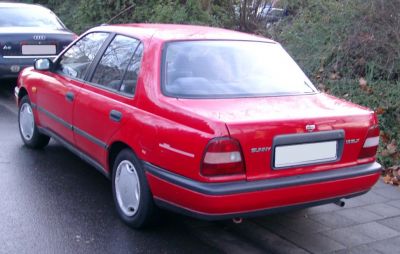
| Production: | 1990-1995 |
|---|---|
| Model Year: | 1991 |
| Length: | 4230 mm166.5 in |
| Width: | 1690 mm66.5 in |
| Height: | 1395 mm54.9 in |
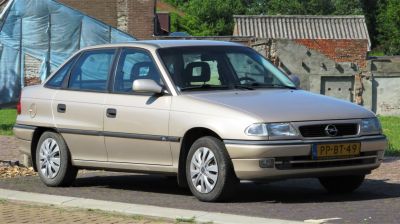
| Production: | 1994-1998 |
|---|---|
| Model Year: | 1994 |
| Length: | 4239 mm166.9 in |
| Width: | 1852 mm72.9 in |
| Height: | 1410 mm55.5 in |
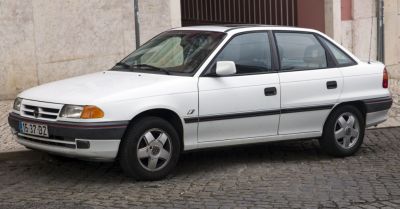
| Production: | 1991-1994 |
|---|---|
| Model Year: | 1992 |
| Length: | 4239 mm166.9 in |
| Width: | 1795 mm70.7 in |
| Height: | 1410 mm55.5 in |

| Production: | 1992-1997 |
|---|---|
| Model Year: | 1993 |
| Length: | 4270 mm168.1 in |
| Width: | 1685 mm66.3 in |
| Height: | 1380 mm54.3 in |
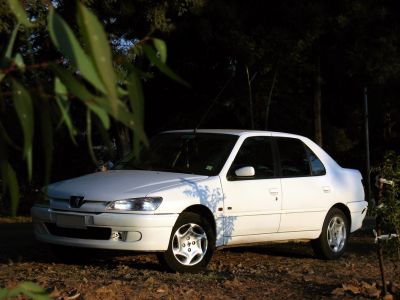
| Production: | 1997-2002 |
|---|---|
| Model Year: | 1997 |
| Length: | 4267 mm168.0 in |
| Width: | 1689 mm66.5 in |
| Height: | 1386 mm54.6 in |
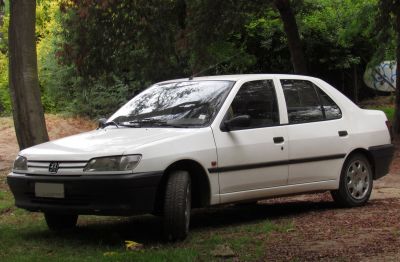
| Production: | 1994-1997 |
|---|---|
| Model Year: | 1994 |
| Length: | 4232-4239 mm166.6-166.9 in |
| Width: | 1689 mm66.5 in |
| Height: | 1386 mm54.6 in |
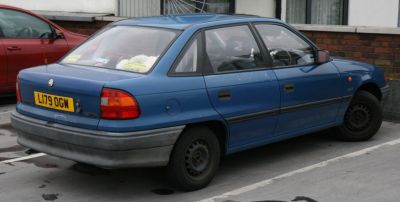
| Production: | 1991-1998 |
|---|---|
| Model Year: | 1991 |
| Length: | 4239 mm166.9 in |
| Width: | 1689 mm66.5 in |
| Height: | 1389-1410 mm54.7-55.5 in |
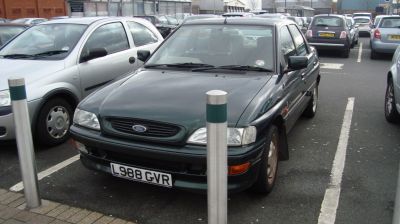
| Production: | 1992-1995 |
|---|---|
| Model Year: | 1993 |
| Length: | 4229 mm166.5 in |
| Width: | 1690 mm66.5 in |
| Height: | 1397 mm55.0 in |
